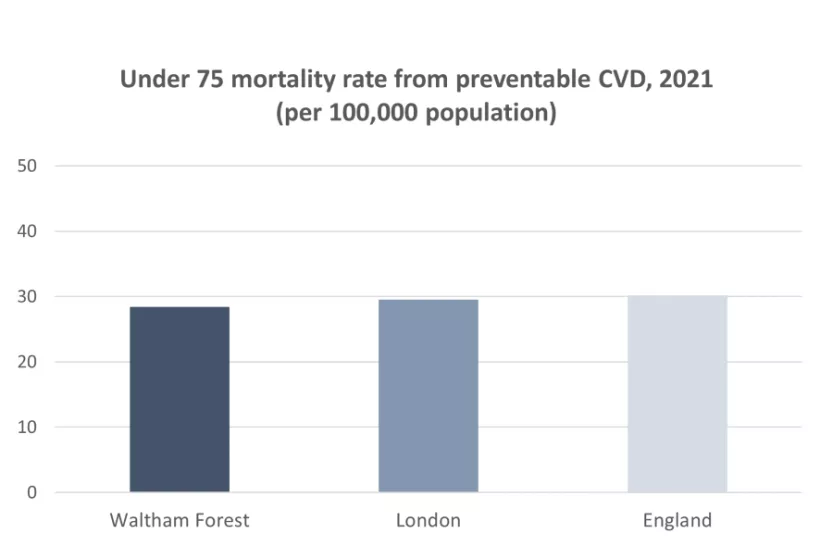Last updated: 3 June 2024
Next review: 3 December 2024
This content is part of the Waltham Forest JSNA. To see other JSNA content, visit the JSNA landing page
Premature mortality includes deaths occurring under the age of 75. Preventable mortality is defined as deaths where all or most deaths could potentially be avoided through effective public health interventions in the broadest sense.
Cardiovascular disease (CVD) is one of the largest causes of deaths in under 75s in England. While there were huge improvements seen nationally in preventable deaths from CVD from 2001 to 2011 (driven by improvements in lifestyle and preventative treatment) rates have not changed as significantly since 2011. The improvement was particularly pronounced for males, with preventable mortality from CVD in Waltham Forest falling from 106 deaths per 100,000 in 2001 to 39 deaths per 100,000 in 2011 (compared to the decline from 59 to 25 deaths per 100,000 amongst females during the same period) reducing the gap between males and females significantly. Since then, this gap has widened again to 44 preventable deaths per 100,000 for males and 19 per 100,000 for females in 2021.
In 2021, the preventable mortality rate from cardiovascular disease in Waltham Forest was 28.4 per 100,000, which is slightly, but not significantly lower than the London (29.5) and England averages (30.2).

Source: OHID Public Health Outcomes Framework. Data based on Office for National Statistics source data. Date accessed: 07 July 2023.
As with all preventable mortality, there is a clear correlation between deprivation and preventable CVD mortality, with the most deprived areas in England having 45.1 deaths per 100,000 population, compared to 21.0 in the least deprived areas. [1]
References
[1] OHID Fingertips - Public Health Outcomes Framework. Date accessed: 04 June 2023.